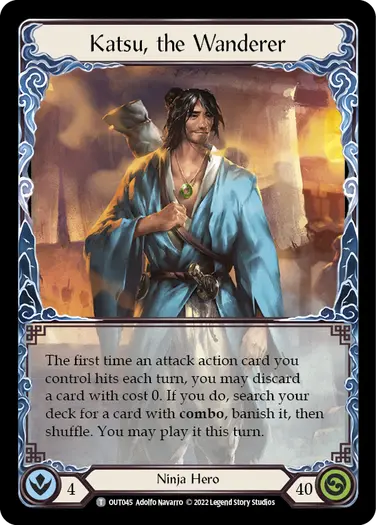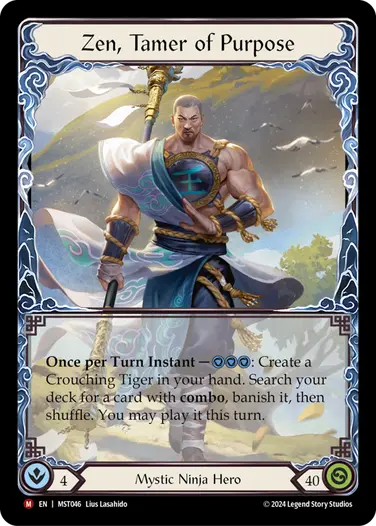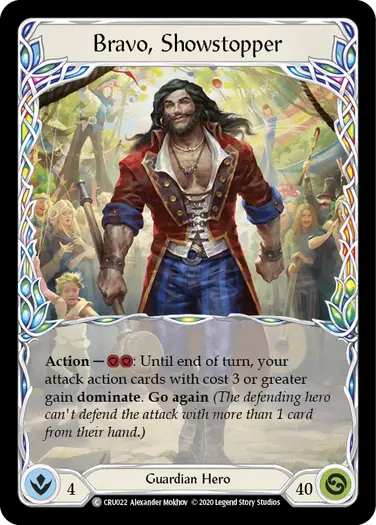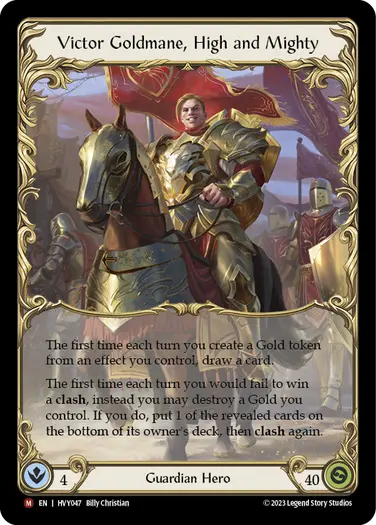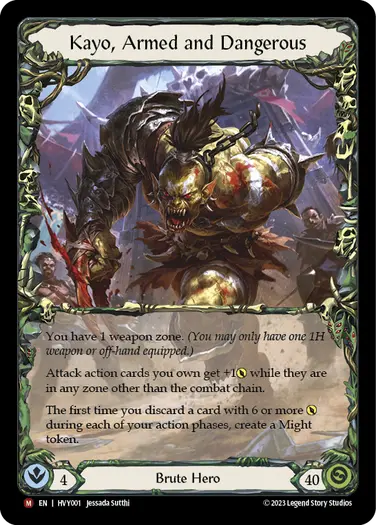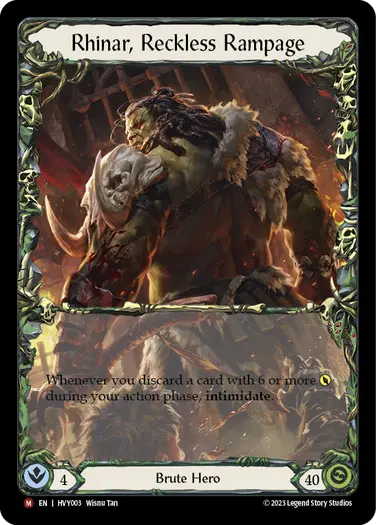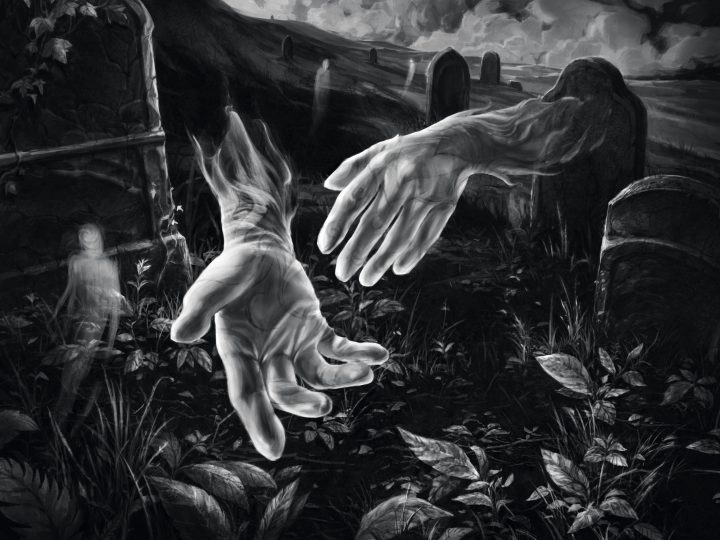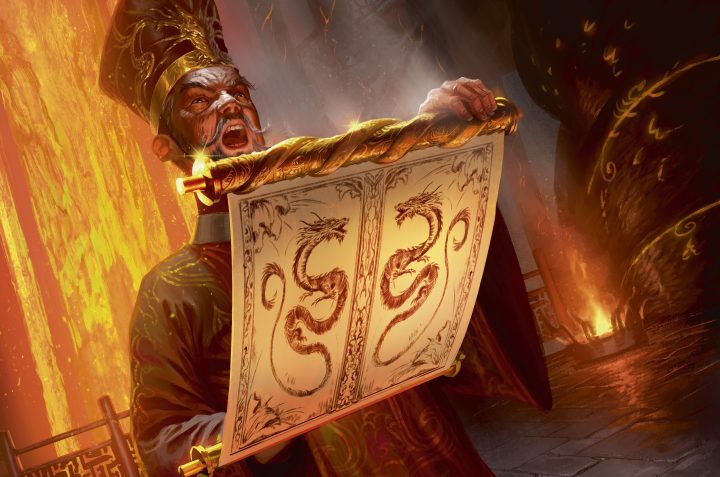Play like a boss with Primed to Fight, where we reel in pro players to share their expertise on various aspects of competitive Flesh and Blood! Today we have Rhea Adams AKA On Hit Effect breaking down how to lock in a hero for your upcoming National Championship. With back to back Battle Hardened wins and a Top 32 placement at the 2022 World Championship under her belt, Rhea is a longtime savvy player with a voracious enthusiasm for cracking the code of each new metagame.
Congratulations to all of our readers that qualified for your 2024 Flesh and Blood National Championship! Whether by Road to Nationals, ELO, or PTI, you proved that you are among the best your country can offer. Your travel and accommodation is booked, you have a list of all the best restaurants, and your bags are all packed… except for 80 cards and a deck registration sheet.
Choosing what hero to play is arguably the most important decision that you make for a tournament, as it influences every single turn that you play. With 27 heroes legal in Classic Constructed, this crossroads can be paralyzing. I want to offer some guidance on how to lock in a hero for the National Championship season that you know you’ll be happy bringing to the table, no matter what your goals are.
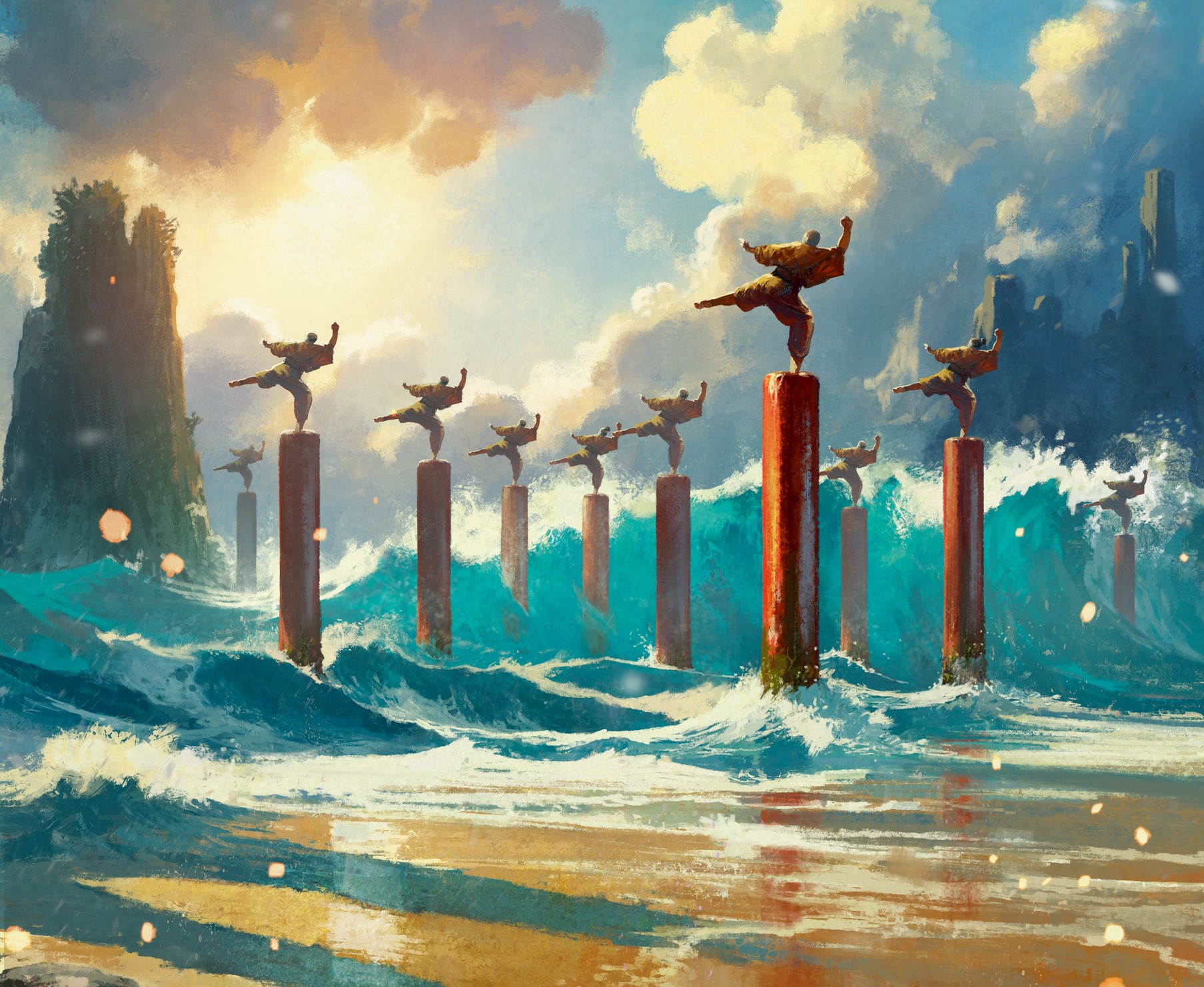
Find the overlaps
Let’s start with the extreme (hypothetical) case: imagine having a wall of deck boxes, one for every hero in the game. To start narrowing down these choices, I like to identify heroes that have significant overlaps in their roles. Every hero in Flesh and Blood has something unique to offer to players, but there is a pattern of general deck archetypes with lots of similarities, most commonly between heroes of the same class.
For example, Katsu, the Wanderer and Zen, Tamer of Purpose are both aggressive “aggro” decks. Katsu thrives when his opponents can’t block efficiently or don’t like to block, so that his hero ability is consistently letting him sculpt his hand with the right combo cards. Contrastingly, Zen’s powerful turns rely on access to Inner Chi, requiring him to draw transcend cards, but not necessarily needing to hit in order to kickstart his explosiveness. Both heroes are strong, but they excel in different metagames. Katsu does better in environments where opponents block less, whereas Zen shines in metas where opponents have access to lots of armor and generally block well. We can formalize these differences between similar heroes in two complementary parts: Matchup advantages and anticipating the metagame.
Matchup advantages
The first step in deciding between similar heroes is identifying how they are better in different matchups. Let’s compare Bravo, Showstopper to Victor Goldmane, High and Mighty. Bravo has access to generically powerful specialization cards like Crippling Crush and Star Struck. These huge, disruptive attacks are strong against any opponent, but they have a limit to how explosive or “unfair” they can be, as their large resource costs means you need to hold back multiple cards to attack with them.
On the other hand, Victor’s hero power is very powerful in matchups where clashes consistently go in his favor – think Ninjas and Warriors, who play low-power attack action cards, or no attack action cards at all. There’s a tradeoff here though; Victor can struggle against opponents with large attack actions that threaten to beat him at his own clashing game. Victor has higher highs and lower lows compared to the more consistently flat power level of Bravo. This differentiates the two decks from each other despite both being similar “control” decks that are efficient at blocking.
Anticipating the metagame
We’ve identified when similar heroes are better positioned compared to their competition in terms of matchups. The next logical question to ask is, “what matchups do I expect to see?” This, really, is the million-dollar question. Whenever there is precedent for a static format set by prior tournaments, I try to base my expectations on those tournaments’ results (by “static format,” I mean tournaments where the exact same card pool is legal without new set releases or bans/suspensions). I do this by asking myself a few questions:
- What have the hero breakdowns been so far? From the first weekend of MST Classic Constructed, we have four Pro Quest+ events to learn from, which might paint a picture of the future National Championship metagame: Assassins, Brutes, and Ninjas vying for the majority of Top 8 spots, while Illusionists, Guardians, and Wizards try to sneak in as wild cards.
- How will players react to these results? Metagames are dynamic. Just as you are looking at tournament Top 8s and wondering how to adapt to them, so is every other player. If Ninja stocks are rising, you might anticipate an increase in fatigue Guardian at the next event, which you could potentially counter-metagame by bringing a board state-focused Illusionist that punishes slow, reactive decks.
- What is the level of competition? Metagames tend to be more focused at high-level events and more diverse at more casual events. You’re likely to see any deck at the Armory level, while at the World Championship, the four or five most-represented heroes commonly make up three-fifths of the field. National Championships tend to be quite focused, being the pinnacle of each country’s annual events. You should plan for rogue decks to be few and far between.
Modeling a metagame
If you think you have a solid grasp on understanding both each hero’s matchup advantages and the anticipated metagame, you can combine that information in a really powerful way. One of the ways that Team Ascent prepares for major tournaments is building a Metagame Spreadsheet (below is an example of the one we created for Pro Tour: Los Angeles, which the team has graciously agreed to share with the public).
By creating a matrix of heroes you expect to see, their expected win rates into each other, and their anticipated meta shares, you can do interesting analyses like calculating Expected Win Rate (the weighted sum of meta share and win rate across all possible opponents) or GEM Variance (how severely your win rate depends on what heroes you play against – Kano has lots of matchups he is strongly favored and unfavored into compared to Dorinthea, which means he has a higher variance based on round pairings).
Spreadsheets like this aren’t guaranteed to be perfect, and they rely on you getting the two components discussed here more or less correct – but they can be a very useful tool to guide your decision-making process.

Picking one archetype
If we’ve done our research correctly, we’ve narrowed down 27 heroes to a subset of decks that are generally expected to be “good” in the meta, and a handful that are more fringe but offer unique, strong game plans and play patterns. But, how do we pick between the premier aggro deck and the disruptive control deck answering aggro’s questions? What about consistent, fair midrange with a high floor and low ceiling, or the burst combo hero looking to set up and win in one turn?
Flesh and Blood strongly rewards mastery of the deck that you play. At the National Championship level, squeezing every point of damage that you can out of your deck is frequently the difference between winning and losing a game. Every hero in Flesh and Blood is competitive, but no pilot is proficient at every deck – if you handed me a Kayo, Armed and Dangerous list, I would make the most represented hero in the Pro Tour: Los Angeles Top 8 look average at best. I strongly encourage you to play what you are comfortable with for the National Championship, as it likely is what you will be able to perform best with. Reps and a rock-solid game plan into each matchup is better than a pile of the best 80 cards in the game.
Locking in your hero
When choosing a hero for your National Championship, I hope you consider one very important thing that lies outside the scope of dissecting a metagame. Flesh and Blood is a game, a wonderful hobby that we all use to meet new friends and have fun in a welcoming, social environment. I hope that whatever hero you choose, it’s one that you have fun with. That really is the best decision you can make at the end of the day.
As for what I’ll be playing? Well, for now the answer remains an enigma…
